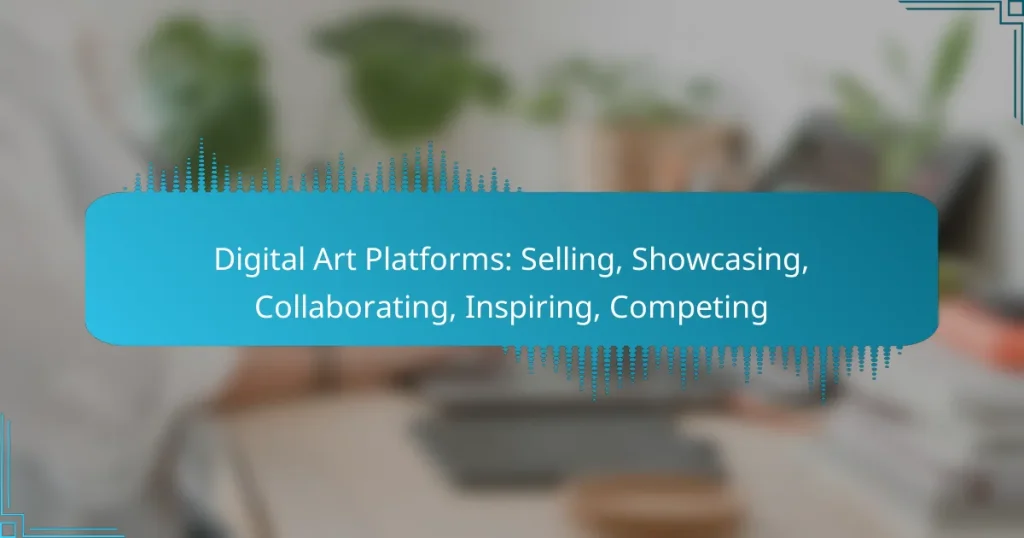Digital art platforms play a crucial role in selling, showcasing, collaborating, inspiring, and competing within the artistic community. By utilizing various marketplaces and social media, artists can effectively distribute their work, connect with peers, and engage with a global audience. Choosing the right platform is essential for maximizing visibility and fostering creative partnerships.
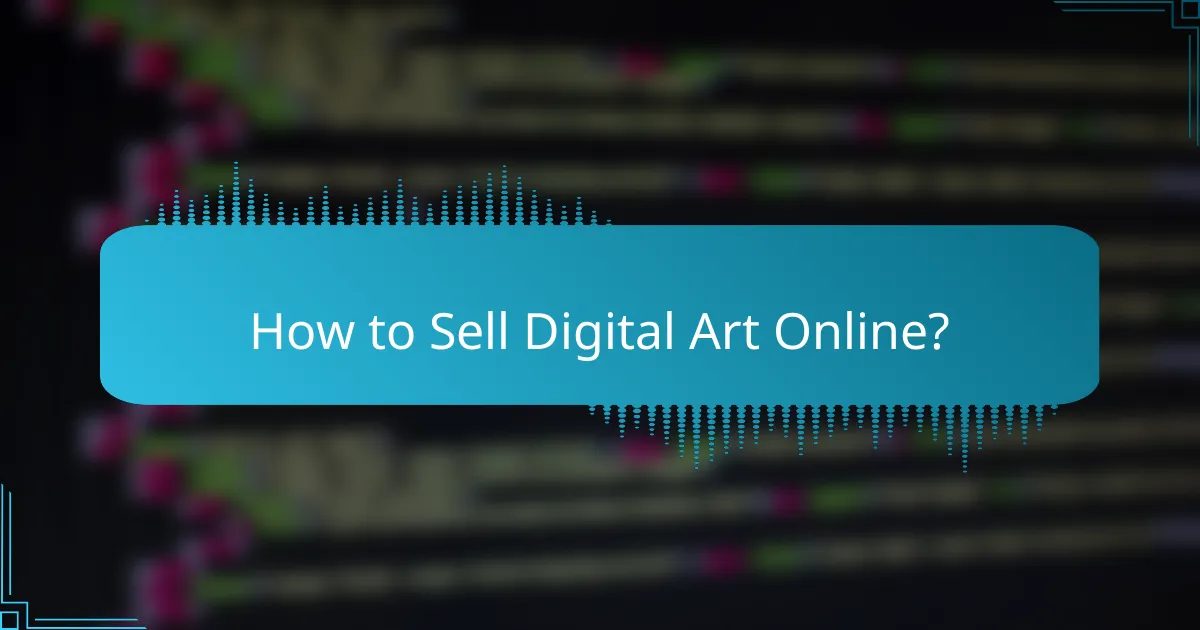
How to Sell Digital Art Online?
Selling digital art online involves using various platforms to showcase and distribute your work while managing transactions efficiently. Artists can choose from multiple marketplaces or set up their own stores to reach a global audience.
Platforms like Etsy
Etsy is a popular marketplace for artists to sell digital art, known for its user-friendly interface and large audience. You can create listings for digital downloads, such as prints or design templates, and set your own prices.
To succeed on Etsy, ensure your shop is visually appealing, use high-quality images, and optimize your listings with relevant keywords. Regularly updating your inventory and engaging with customers can also boost your visibility.
Using Shopify
Shopify allows artists to create their own online store, offering more control over branding and customer experience. You can customize your site, manage inventory, and integrate various payment options.
Consider using Shopify if you plan to sell a wide range of digital products or want to build a unique brand identity. The platform offers various pricing plans, so choose one that fits your budget and expected sales volume.
Benefits of Printful Integration
Integrating Printful with your online store enables you to offer print-on-demand services for your digital art. This means you can sell physical products without holding inventory, as Printful handles printing and shipping.
This integration can expand your product offerings and appeal to customers who prefer tangible items. It’s a cost-effective way to test new designs without upfront investment in stock.
Pricing Strategies for Digital Art
When pricing digital art, consider factors such as your experience, the complexity of the work, and market demand. A common approach is to set prices based on the time spent creating the piece, often ranging from low tens to hundreds of dollars.
Research similar artworks to gauge competitive pricing, and consider offering discounts for bulk purchases or limited-time promotions to attract buyers.
Payment Processing Options
Choosing the right payment processing options is crucial for smooth transactions. Most platforms like Etsy and Shopify offer built-in payment gateways, such as PayPal or Stripe, which are widely trusted by customers.
Ensure you understand the fees associated with each payment option, as they can vary significantly. Offering multiple payment methods can also enhance customer convenience and increase sales potential.
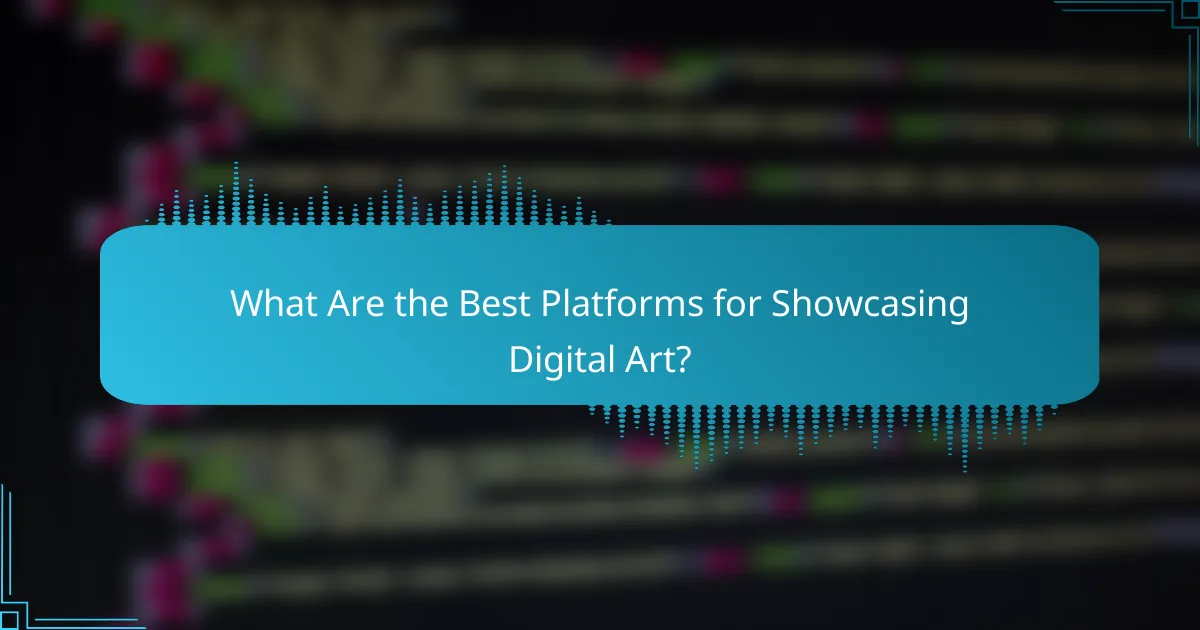
What Are the Best Platforms for Showcasing Digital Art?
The best platforms for showcasing digital art include Behance, ArtStation, DeviantArt, and Instagram. Each platform offers unique features that cater to different audiences and artistic styles, making it essential to choose one that aligns with your goals.
Behance Features
Behance is known for its professional presentation and project-based layout, allowing artists to display their work in a portfolio format. Users can create detailed project pages that include images, videos, and descriptions, making it ideal for showcasing comprehensive works.
Additionally, Behance offers a strong networking component, enabling artists to connect with potential clients and collaborators. The platform also features a job board, which can be beneficial for artists seeking freelance opportunities.
ArtStation Community
ArtStation is tailored for digital artists, particularly those in the gaming and entertainment industries. It allows users to upload high-resolution images and create portfolios that highlight their skills and styles effectively.
The community aspect of ArtStation is robust, with features like forums and challenges that encourage interaction among artists. This platform also provides opportunities for artists to sell prints and digital downloads directly to fans.
DeviantArt User Engagement
DeviantArt boasts a large and diverse community, making it a great platform for artists of all levels. Users can share their work, receive feedback, and engage in discussions, fostering a sense of belonging.
DeviantArt also offers features like groups and contests, which can help artists gain visibility. However, the platform’s layout can be cluttered, so it may take time to navigate effectively and showcase work optimally.
Instagram for Visual Exposure
Instagram is a powerful tool for visual exposure, allowing artists to share their work with a broad audience through images and short videos. The platform’s emphasis on visual content makes it ideal for artists looking to build a following and engage with fans.
To maximize impact, artists should use relevant hashtags and post consistently. However, the fast-paced nature of Instagram means that content can quickly get lost, so artists should also consider cross-promoting their work on other platforms for better visibility.

How to Collaborate with Other Digital Artists?
Collaborating with other digital artists involves working together on projects, sharing ideas, and leveraging each other’s skills to enhance creativity. Effective collaboration can lead to innovative artworks and broaden your audience reach.
Using Discord for Collaboration
Discord is a popular platform for artists to connect and collaborate in real-time. You can join or create servers dedicated to specific art styles or themes, allowing for focused discussions and project planning.
Consider using voice channels for brainstorming sessions or screen sharing to provide immediate feedback on each other’s work. Establish clear guidelines for communication to ensure productive interactions.
Joint Projects on ArtStation
ArtStation allows artists to showcase their work and collaborate on joint projects. You can create a shared portfolio or a collaborative artwork, which can attract more viewers and potential clients.
When initiating a joint project, define roles and responsibilities early on. Use ArtStation’s features to track progress and provide updates, ensuring that both artists are aligned throughout the process.
Benefits of Online Workshops
Online workshops offer a structured environment for collaboration, where artists can learn from each other and share techniques. Participating in workshops can enhance your skills while fostering connections with fellow artists.
Look for workshops that focus on specific tools or styles that interest you. Engaging in these settings can lead to lasting partnerships and inspire new creative directions.
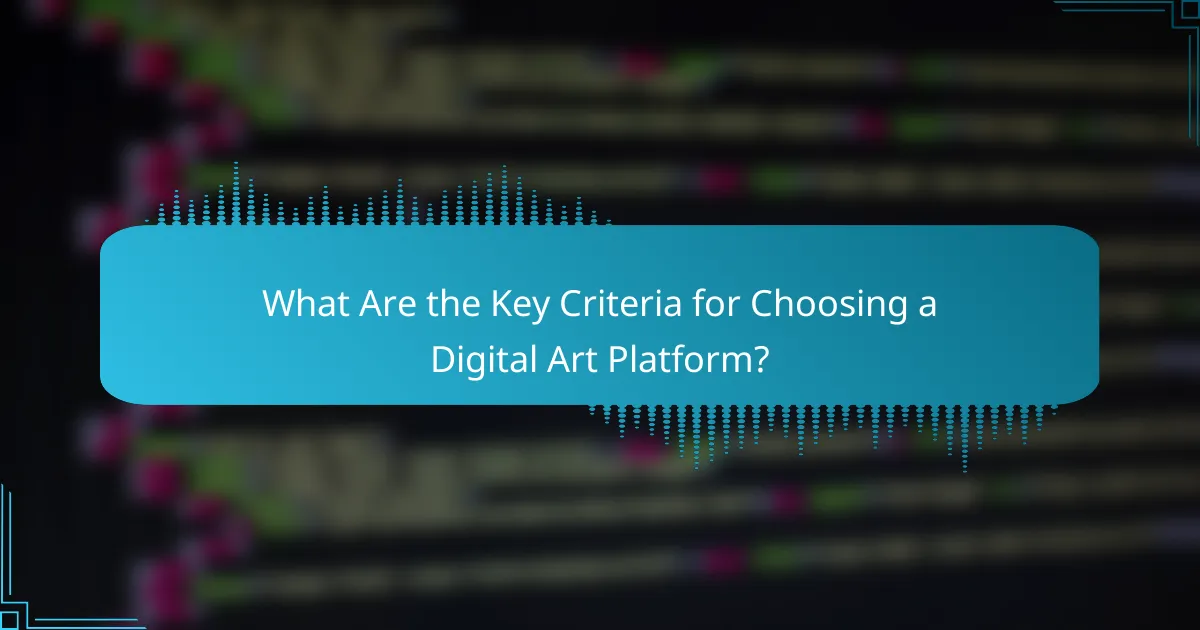
What Are the Key Criteria for Choosing a Digital Art Platform?
When selecting a digital art platform, consider factors such as user interface, commission rates, and community support. These elements significantly impact your experience as an artist and can influence your success in selling and showcasing your work.
User Interface and Experience
A user-friendly interface is crucial for efficiently navigating a digital art platform. Look for platforms that offer intuitive design, easy upload processes, and clear categorization of art styles. A seamless experience can enhance your workflow and encourage more frequent engagement with the platform.
Consider testing the platform’s interface before committing. Many platforms offer free trials or demo versions, allowing you to evaluate how well it meets your needs. Pay attention to features like customization options and mobile accessibility, as these can greatly affect your overall satisfaction.
Commission Rates
Commission rates can vary widely among digital art platforms, typically ranging from 5% to 30% of each sale. It’s essential to understand how these rates will affect your earnings and factor them into your pricing strategy. Some platforms may offer lower rates but charge additional fees for features or services.
Compare commission structures across different platforms to find the most favorable terms. For instance, some may have tiered rates based on sales volume, which could benefit high-performing artists. Always read the fine print regarding any hidden fees or conditions that could impact your profits.
Community Support
Strong community support can enhance your experience on a digital art platform. Look for platforms that foster interaction among artists, such as forums, feedback systems, or collaborative projects. A supportive community can provide valuable insights, encouragement, and networking opportunities.
Evaluate the resources available for artists, including tutorials, webinars, and customer service. Platforms that prioritize artist development and engagement often create a more enriching environment. Engaging with the community can also lead to collaborations and increased visibility for your work.
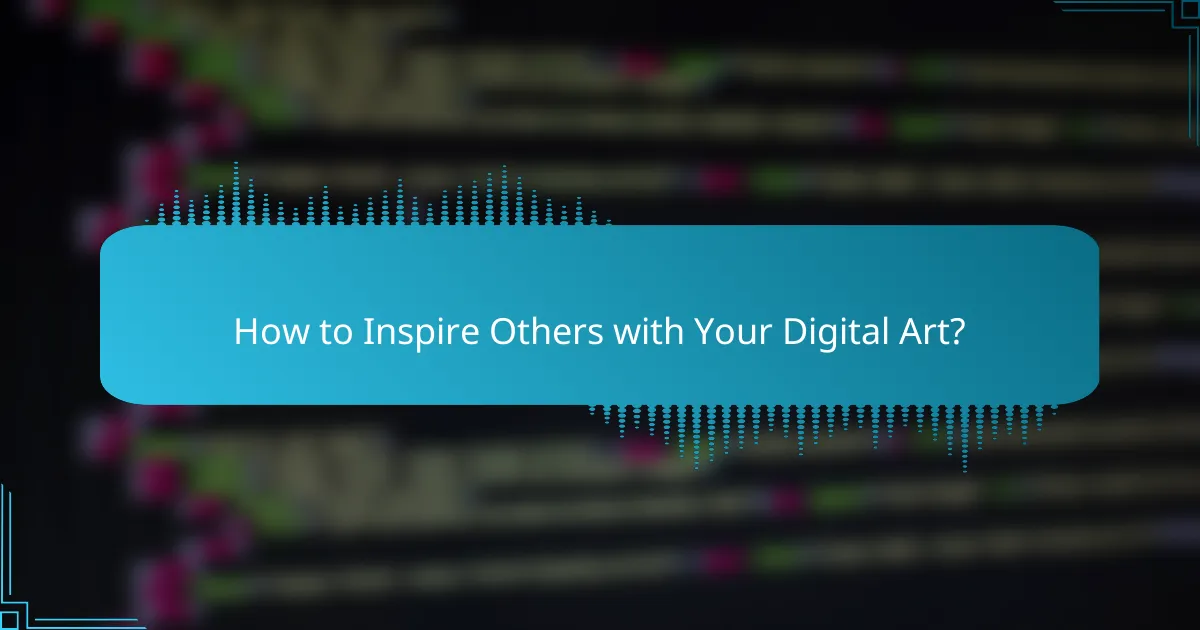
How to Inspire Others with Your Digital Art?
To inspire others with your digital art, share your creative process and insights through various platforms. Engaging tutorials, live streams, and participation in art challenges can motivate fellow artists and foster a supportive community.
Creating Tutorials on YouTube
Creating tutorials on YouTube is an effective way to inspire others and showcase your techniques. Focus on specific skills, such as digital painting or character design, and break them down into manageable steps. Aim for clarity and engagement to keep your audience interested.
Consider using screen recording software to capture your workflow, and include voiceovers to explain your thought process. Consistency is key; posting regularly can help build a loyal following and encourage interaction in the comments.
Hosting Live Streams on Twitch
Hosting live streams on Twitch allows you to interact with viewers in real-time while creating art. This format fosters a sense of community and provides immediate feedback from your audience. Choose a schedule that works for you, whether it’s weekly or bi-weekly, to maintain viewer interest.
Engage with your audience by answering questions and discussing your techniques as you work. Use polls or chat prompts to involve viewers in your creative decisions, making them feel like part of the process.
Engaging with Art Challenges
Participating in art challenges is a great way to inspire others and push your own creative boundaries. Many online communities host monthly or weekly challenges that encourage artists to create based on specific themes or prompts. Joining these can increase your visibility and connect you with like-minded individuals.
When engaging in challenges, share your progress on social media platforms and encourage others to join in. This not only showcases your work but also builds a supportive network where artists can motivate each other to improve and innovate.
